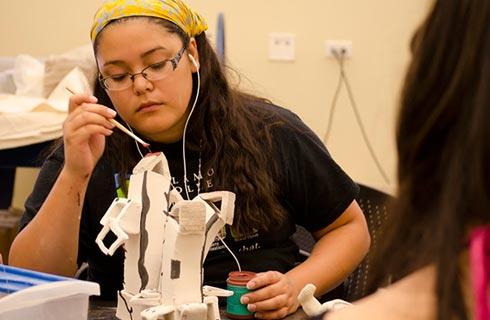化学理学士(主修)
Bachelor of Science in Chemistry (With Major)

学历文凭
Bachelor Degree

专业院系
Chemistry

开学时间

课程时长

课程学费

国际学生入学条件
IDP—雅思考试联合主办方

雅思考试总分
6.5
- 雅思总分:6.5
- 托福网考总分:88
- 托福笔试总分:160
- 其他语言考试:PTE - 58
CRICOS代码:
申请截止日期: 请与IDP联系 以获取详细信息。
课程简介
We have some of the most advanced equipment in the field. While other schools often reserve the newest equipment exclusively for research, all of Brock’s facilities are used for both teaching and research.Our commitment to hands-on learning makes our graduates especially skilled and adept scientists. You’ll be a key partner in our research activities, participating in special research courses and paid summer research. You might even have the opportunity to co-author a publication.Our programs stress chemical principles and practice through research in organic, inorganic, analytical, physical and theoretical chemistry, with a strong emphasis on the interdisciplinary fields of bio-inorganic and bio-organic chemistry and chemical biophysics. Research interests of the department include development of new chiral ligands, organometallic reagents, methods for asymmetric synthesis, green chemistry as well as protein affinity labelling and protein-lipid interactions, and structure-activity correlations of anticancer pharmaceuticals. Other interests include ligand design and crystal engineering aimed at self-assembly of novel molecule-based materials, design of new ligand platforms for low oxidation state main-group compounds, advanced laser spectroscopy and microscopy; novel nanostructured materials synthesis, organic matter characterization and trace contaminant analysis. Theoretical research focuses on studies to understand charge and energy transfer reactions in photosynthetic proteins.
相关申请
 预科
预科 奖学金
奖学金 实习机会
实习机会 在校学习
在校学习 跨境学习
跨境学习 校园授课-线上开始
校园授课-线上开始 在线/远程学习
在线/远程学习
开学时间&学费
学费信息仅供参考,请与IDP联系以获取详细信息
| 开学时间 | 时长 | 学费 | 地点 |
|---|
关于布鲁克大学

布鲁克大学位于加拿大生机勃勃的圣凯瑟琳斯市,是一所有着近60年教育历史、高瞻远瞩的公立研究型院校,为学生提供丰富的学术知识和大学生活。布鲁克大学开设有本科和研究生课程以及各种受到评鉴机构认可的职业培训课程。全校大约有1.9万名学生,其中约1.7万名是本科生。该校拥有加拿大第五大合作教育计划,还提供精彩的项目和实践学习机会。布鲁克大学拥有一个由大约2500名学生组成的充满活力的国际学生群体,他们代表世界各地的不同民族和文化,将各种观点和生活方式带到校园中来。布鲁克大学位于令人叹为观止的尼亚加拉地区,距离自然奇观尼亚加拉大瀑布只有几分钟路程,是加拿大仅有的几所位于联合国教科文组织生物圈保护区中的大学之一。该地区有许多值得探索的美丽的自然景观,一年四季都有精彩刺激的户外活动。布鲁克大学提供一系列出色的学生服务,注重学生身心健康,给予学生大量学习方面的支持和帮助。该校的心理健康服务连续三年在加拿大名列榜首,学生满意度也一直位居加拿大前三名。该校为学生提供大量经济资助选择,其中包括奖学金、助学金和政府资助计划。
本校相关课程
其他相关课程

Bachelor of Arts in Chemistry- Environmental Chemistry
 德克萨斯农工大学学院站分校
德克萨斯农工大学学院站分校学历文凭
Bachelor Degree
开学日期
课程费用总额


化学文科学士学位
 迈阿密大学
迈阿密大学泰晤士高等教育世界大学排名:239
学历文凭
Bachelor Degree
开学日期
课程费用总额


化学文学硕士-材料和物理化学
 俄勒冈州立大学
俄勒冈州立大学学历文凭
Masters Degree
开学日期
课程费用总额


Bachelor of Arts in Biochemistry - Chemistry
 利普斯科姆大学-国际学习中心(StudyGroup)
利普斯科姆大学-国际学习中心(StudyGroup)学历文凭
Bachelor Degree
开学日期
课程费用总额


Doctor of Philosophy in Chemical Education
 普渡大学
普渡大学学历文凭
Ph.D.
开学日期
课程费用总额


Master of Science in Chemistry
 伊利诺伊大学香槟分校
伊利诺伊大学香槟分校学历文凭
Masters Degree
开学日期
课程费用总额










 加拿大
加拿大





